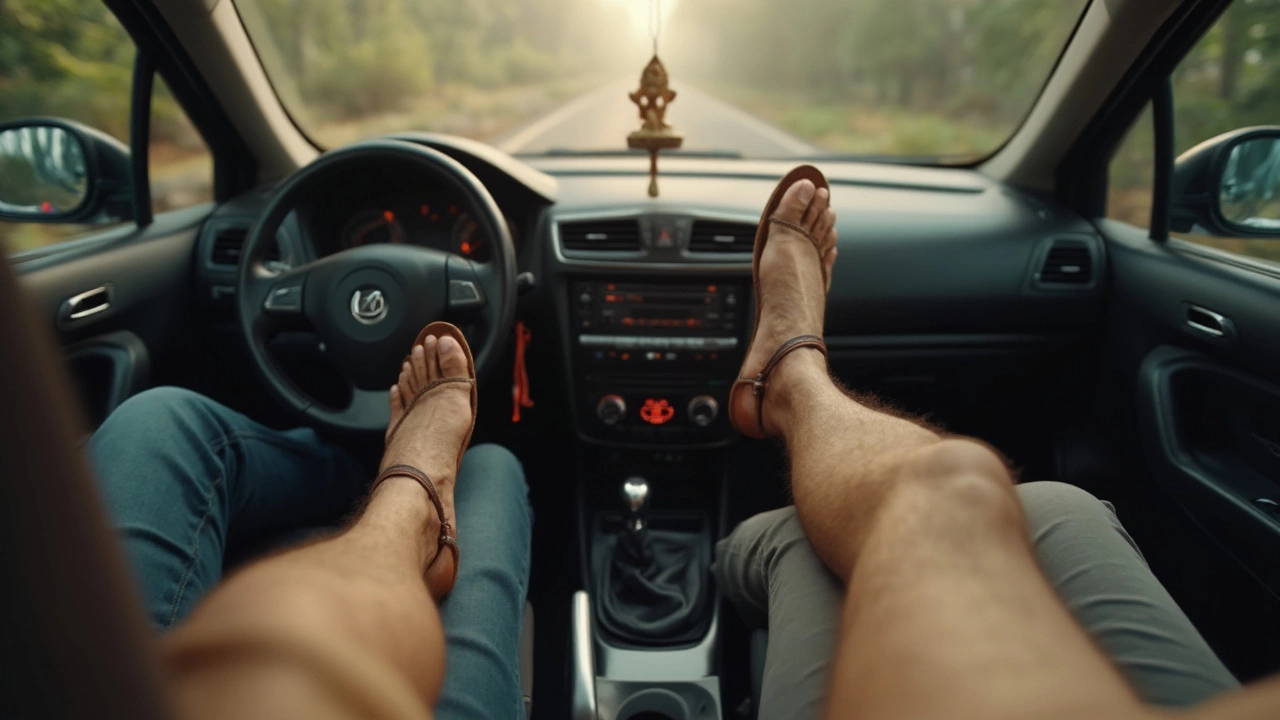Ever reached a stoplight and felt your car shudder instead of gliding to a halt? Heard a strange burning smell mixed with the hint of panic that your clutch bills are about to climb? Few things create more dread for a manual car owner than clutch troubles. But you don’t need a mechanical engineering degree to figure out if your clutch is struggling. Getting ahead of the game with a few smart tests (and some insider knowledge) could save you thousands—or at least keep you from embarrassing yourself at that next hill start.
What Does the Clutch Actually Do?
Most people treat the clutch pedal like background noise, but it’s the unsung hero every time you shift gears. The clutch sits between your engine and your transmission. When you press the clutch pedal, you disconnect the engine from the wheels, letting you switch gears without any crunching or grinding—it’s one of those little miracles of engineering we soon take for granted. In essence, the clutch is a pair of friction plates that squeeze together to transmit the engine's power or, when the pedal's pressed, pull apart to separate the gearbox.
Here’s what’s wild: a healthy clutch assembly can sometimes handle hundreds of thousands of kilometers, especially in flat, easy-driving places like Adelaide. But aggressive driving, towing, hill starts, or city stop-and-go can burn through that lifespan in a surprising hurry. When the friction material wears down or oil leaks onto the disc, your clutch might start to slip, shudder, or even stink. Once the clutch starts slipping, you’ll notice your engine revving up with little response from your wheels—almost like you’re stuck in neutral. That’s money flying out your exhaust.
Manual cars rely on the clutch for almost everything—start-offs, gear changes, reversing. That’s why catching clutch problems before total failure is such a big deal. It also cuts down on the nerve-wracking possibility of rolling backwards on a hill with your kids in the back, especially if you’re driving something heavy.
Signs Your Clutch Needs Testing
Your car isn’t shy about warning you when something’s wrong. If your clutch is on the way out, chances are you’ll spot one or more of these classic signals:
- Slipping sensation – You press the accelerator, but the engine revs higher than the speed climbs. It’s like running on ice; the power just isn’t hitting the ground.
- Difficulty shifting gears – Changes feel sticky, grindy, or reluctant, especially into first or reverse.
- Strange noises – Listen for squeaks or rattles when you depress the clutch pedal, or a growling noise that rises and falls with the pedal.
- Shuddering – The whole car shakes or vibrates in first gear or when you pull away from a stop.
- Burnt smell – That acrid, smoky scent, especially during hard driving, hill starts, or after heavy traffic.
- Clutch pedal feels weird – If it suddenly feels spongy, sticks closer to the floor, or releases right at the top, something’s not happy down there.
If you’ve noticed any of these, it’s time to test your clutch properly. Ignoring these signs just risks a total clutch failure at the worst possible time—like in a roundabout during Adelaide rush hour or halfway up a beach launch ramp.

Step-By-Step: How to Test a Clutch at Home
Before reaching for the phone and booking into a mechanic, a few safe at-home tests can reveal if your clutch is healthy enough for the long haul—or if it’s time to bite the bullet. No special gear required, just a clear bit of road or driveway, your hands, and your ears.
- Start with a Stationary Test. Start the engine. With your foot on the brake, try shifting into first or reverse. Does the car jerk, lurch, or struggle? If so, your clutch isn’t fully disengaging. Sometimes the car won’t even go into gear.
- Tighten the Diagnosis with the Handbrake Test. With the car on a flat surface, apply the handbrake fully. Shift into third gear. Slowly release the clutch while applying a little throttle as if you were starting off normally. If the engine stalls instantly, your clutch is holding firm. If the engine keeps running (or struggles but doesn’t stall), the clutch is slipping badly—time to call for help.
- Take a Test Drive for Slip. Find a safe, open road. In a higher gear (say, fourth or fifth), press the accelerator pedal sharply. Watch the tachometer (rev counter). If engine RPMs shoot up but the speed doesn’t increase in sync, your clutch is slipping under load.
- Check for Clutch Engagement Height. On most cars, the clutch bites about halfway through the pedal travel. If your clutch only engages right at the floor or way up near the top, that means the friction material is worn or there’s air in the hydraulic lines.
- Listen and Smell. Weird noises when pressing or releasing the clutch—like chirping, sticking, or grinding—could mean a worn release bearing or a warped clutch disc. And if you get any burnt, chemical smell after a few starts on a slope, that’s classic for excessive clutch slip.
I’ve watched my son Finneas try to get his mate’s old Holden Barina up a steep driveway with a fried clutch—lots of revving, plenty of embarrassment, and a mechanic’s bill bigger than his first month’s wages. Doing these tests early can stop that scenario from becoming your own family story.
Common Clutch Problems and What Causes Them
Clutches don’t fail ‘just because.’ Most problems come back to driving habits or deeper mechanical issues. Here’s the shortlist:
- Riding the clutch – Keeping your foot on the pedal between gear changes wears it down fast. It’s a classic habit in heavy city traffic.
- Aggressive starts – Launching from every light or rev-matching like you’re at Bathurst will kill a clutch quickly.
- Hill holds using the clutch – Balancing on the clutch at traffic lights on a slope instead of using the handbrake causes glazed friction plates and loss of grip.
- Oil leaks – Leaky rear engine or gearbox seals let oil or transmission fluid drip onto the clutch, causing huge loss in grip and weird behaviour.
- Faulty hydraulics or cables – If the clutch doesn’t disengage fully due to a stretched cable, air in the system, or leaking master/slave cylinder, shifting becomes difficult and the clutch may wear out unevenly.
- Poor installation – If replaced by a DIYer without a clutch alignment tool or if bolts aren’t torqued right, you can get judder, slipping, and rapid wear even with new parts.
You won’t always smell or hear something when these problems begin. Sometimes, the first clue is just a sluggish shift or a bite point that’s mysteriously moved. People in Adelaide often gloss over these issues until the dreaded 'no drive' moment—don’t be that person. Knowing these causes makes it easier to avoid wrecking your next clutch and helps you pick up issues with your mate's second-hand cars, too.

What To Do If Your Clutch Fails These Tests
If you’ve done the tests and your clutch looks shaky, don’t just hope for the best. Driving on a failing clutch is a bit like crossing the Nullarbor with a dodgy radiator—eventually, you’re going to be stranded with a big repair bill. Here’s what you can do next:
- If you catch the problem early and it’s just a bite point moving or the pedal feeling weird, sometimes it’s a simple hydraulic system bleed or a new cable. These jobs are cheap and manageable at most independent workshops.
- If slipping is obvious, or if weird noises and burnt smells start cropping up, you probably need a full clutch kit. This includes the friction disc, pressure plate, release bearing, and sometimes a flywheel resurfacing.
- Don’t keep driving on a slipping clutch. Revs without acceleration create even more heat and wear, turning a $1,000 job into a $3,000 gearbox rebuild if the flywheel or transmission get toasted.
- Chat with a mechanic you trust and ask for a diagnostic drive. Some will even let you ride along (if you’re polite) to describe what you’re feeling. This helps separate clutch problems from other drivetrain issues like bad mounts or a worn gearbox.
- If you need to squeeze a few extra days out of a bad clutch (like waiting for payday or a parts delivery), avoid hills, heavy loads, and wild RPM. Shift gently, use the handbrake for hill starts, and coast more if traffic allows.
- And for goodness’ sake, don’t buy a used car without road-testing the clutch. It's one of those classic problems sellers hope their car will magically avoid—at least until you own it. Always check the clutch with the above tests even if the rest of the car looks spotless.
An experienced driver can sometimes tune out minor clutch issues for months, but that’s playing with fire. Much better to sort the fix while it’s still cheap, and before you’re left calling a tow truck from the middle of Sturt Road with a cranky toddler in the back.




